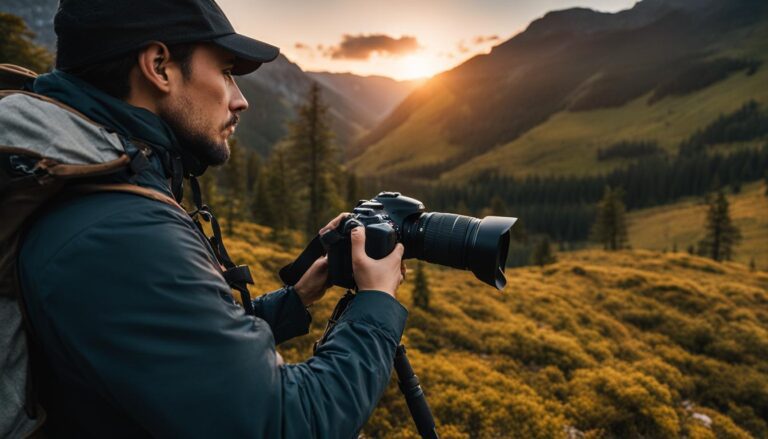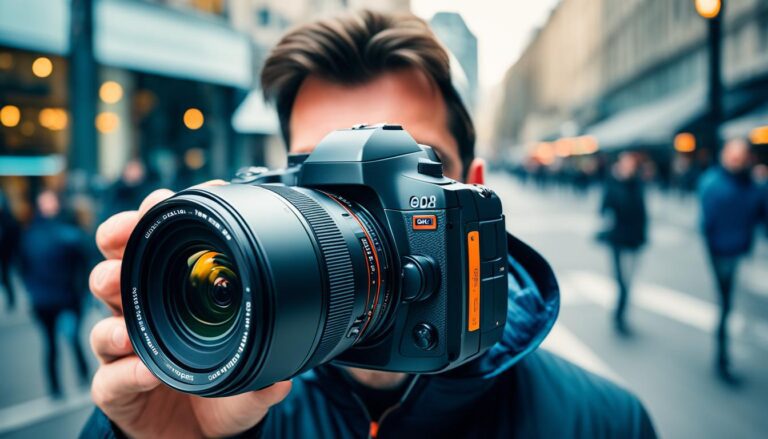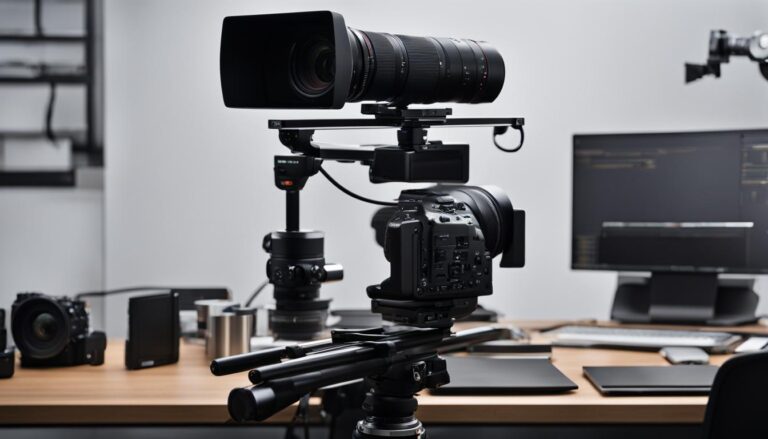best camera for online courses
When it comes to creating online courses, there’s no denying the power of high-quality visuals in capturing your students’ attention and enhancing their learning experience. But as an educator, you might wonder, what is the best camera to elevate my teaching? Is it worth investing in a dedicated camera or is my smartphone good enough?
Key Takeaways:
- High-quality visuals are crucial for engaging students in online courses.
- Before investing in a camera, consider optimizing your smartphone’s camera capabilities.
- Adjust camera settings, clean the lens, and record videos horizontally for better results.
- Utilize a cloud-based system to store content and free up space on your smartphone.
- Choosing the right camera involves considering your needs, budget, camera types, lens options, and essential functions.
Are you ready to take your online teaching to the next level? Let’s explore the best camera options that can help you create captivating course content and captivate your students’ attention.
Getting Started with Smartphone Cameras
Before investing in a dedicated camera, let’s explore how you can make the most out of your smartphone’s camera. Smartphone cameras have evolved significantly over the years, offering impressive video and photo quality.
To enhance your smartphone camera’s performance, follow these tips:
- Adjust Camera Settings: Take a moment to explore your smartphone’s camera settings. You may find options to enhance video and photo quality, such as adjusting exposure, white balance, and focus settings. Experiment with different settings to achieve the desired results.
- Utilize HD and 4K Resolution: If your smartphone supports HD or 4K recording, take advantage of these higher resolutions. Higher resolution videos can make your course content appear more professional and visually appealing.
- Clean Your Lens Regularly: Smartphone cameras often accumulate dirt and fingerprints on the lens, which can affect photo and video clarity. Gently clean the lens with a microfiber cloth or lens cleaning solution to ensure sharp and clear visuals.
- Record Videos Horizontally: When recording videos, it’s essential to hold your smartphone horizontally (landscape mode) rather than vertically (portrait mode). Horizontal videos are more visually pleasing and align with standard video formats.
- Free Up Storage Space: Shooting high-quality videos and capturing numerous photos can quickly fill up your smartphone’s storage. Utilize a cloud-based system to store your course content, freeing up storage space on your smartphone for new recordings.
By optimizing your smartphone camera settings, cleaning the lens regularly, and recording videos horizontally, you can significantly enhance the quality of your course content. Now, let’s delve deeper into choosing the right camera for your specific needs.
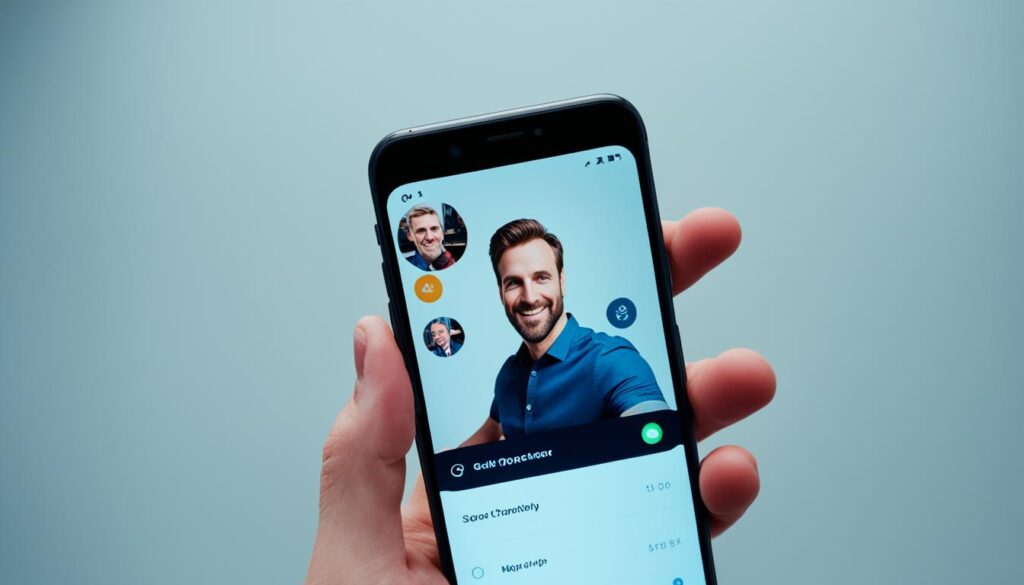
Choosing the Right Camera for Your Needs
When upgrading from a smartphone, it’s crucial to determine your needs and set a realistic budget. We understand that finding the perfect camera for your online course can be overwhelming, but fear not! We are here to guide you through the process.
First, let’s explore the different camera types available. You have options such as point and shoot, DSLR, and mirrorless cameras. Each type has its own unique advantages and disadvantages, so it’s important to research thoroughly in order to find the best fit for your specific requirements.
One of the key factors to consider during your camera selection journey is lens options. For DSLRs and mirrorless cameras, the ability to use interchangeable lenses opens up a world of possibilities. Different lenses can greatly impact the visual quality of your content, allowing you to capture stunning visuals that will captivate your audience. So, be sure to explore the various lens options available and choose accordingly.
In addition to camera type and lens options, it’s vital to prioritize essential functions that will enhance your course production experience. Look out for features like Bluetooth and Wi-Fi connectivity for seamless file transfers, mic input/output for impeccable audio quality, rotating LCD screens for flexible shooting angles, and eye/face tracking for effortless focus on your subject.
Remember, your camera is a tool that should support and elevate your teaching. By considering your needs, setting a realistic budget, exploring different camera types, assessing lens options, and prioritizing essential functions, you’ll be well on your way to selecting the perfect camera for your online course production.
Examples of Essential Functions:
- Bluetooth and Wi-Fi connectivity
- Mic input/output
- Rotating LCD screen
- Eye/face tracking
Recommended Cameras for Online Courses
When it comes to capturing high-quality visuals for your online courses, having the right camera is essential. In this section, we will explore some of the best camera options available, including smartphones and dedicated cameras.
Smartphones
Let’s start with the device most people already have in their pockets – smartphones. With advancements in technology, smartphones now offer excellent video quality and are readily available. Whether you have an iPhone or an Android device, you can take advantage of your smartphone’s camera to create engaging course content.
Simply optimize your camera settings for video recording, clean the lens regularly for clearer visuals, and record videos horizontally for a more professional look. Remember to utilize a cloud-based system to store your content and free up space on your smartphone.
Logitech C920
If you’re looking for a cost-effective and easy-to-use option, the Logitech C920 webcam is a great choice. With its HD recording capabilities, you can achieve crystal-clear video quality without the need for a dedicated camera. Simply connect the webcam to your computer and start recording your online course.
Sony A6400
The Sony A6400 is an excellent beginner-friendly camera for online course production. It features a 24.2-megapixel sensor that captures sharp and vibrant images. With its versatile shooting modes, including automatic and manual options, you can easily customize the settings to suit your needs.
Canon EOS R
For those seeking advanced features and exceptional performance, the Canon EOS R is a top contender. This mirrorless camera offers a wide range of capabilities, including an RF lens mount for superior image quality and compatibility with various lenses. With its advanced features, such as high-speed continuous shooting and 4K video recording, the Canon EOS R is a reliable option for producing high-quality online courses.
Nikon D3300
The Nikon D3300 is another recommended camera option that delivers outstanding image and video quality. With its 24.2-megapixel sensor and full HD video recording capabilities, you can capture stunning visuals for your online courses. The D3300 also offers a variety of shooting modes and creative effects, allowing you to experiment and enhance your course content.
Remember, each camera mentioned here offers unique features and advantages. Your choice should depend on your specific needs, budget, and level of expertise. Whichever camera you choose, be sure to familiarize yourself with its settings and features to get the best results for your online courses.
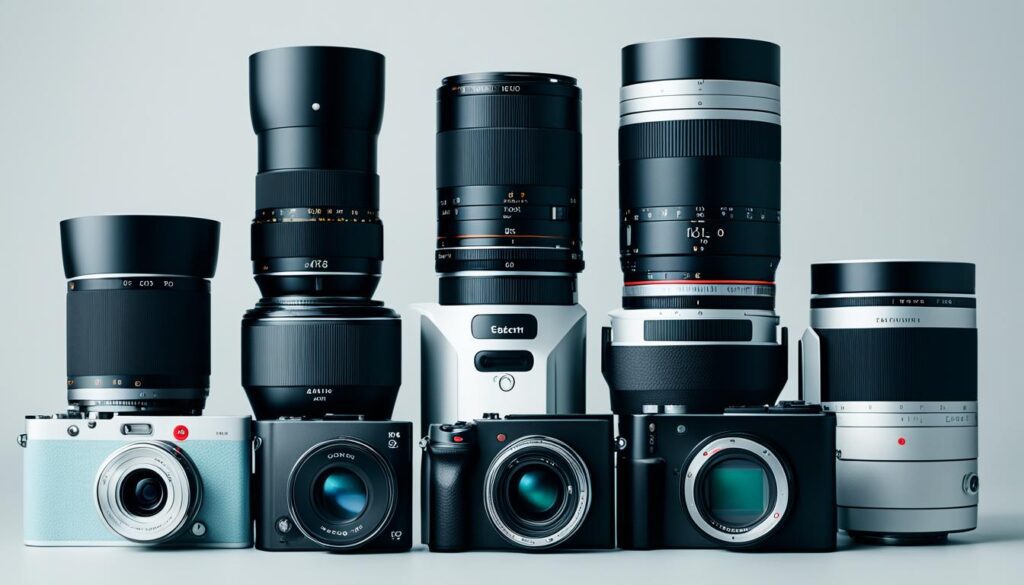
Conclusion
Choosing the best camera for your online courses requires careful consideration of various factors. Your budget, camera type, lens options, and essential functions all play a crucial role in finding the perfect fit. While smartphones can provide excellent video quality, dedicated cameras like the Logitech C920, Sony A6400, Canon EOS R, and Nikon D3300 offer enhanced features and capabilities that can elevate your teaching experience.
As a course creator, it’s important to focus on creating compelling content that engages and inspires your students. Investing in the right equipment enables you to bring your vision to life without overspending. Consider your budget and prioritize the features that matter most to you, whether it’s the versatility of interchangeable lenses or the convenience of wireless connectivity.
Remember, the best camera for online courses is not necessarily the most expensive one. It’s the one that fits your budget and meets your specific needs as an educator. By harnessing the power of technology and optimizing your camera’s capabilities, you can create impactful and visually appealing course content that captivates your audience without breaking the bank.
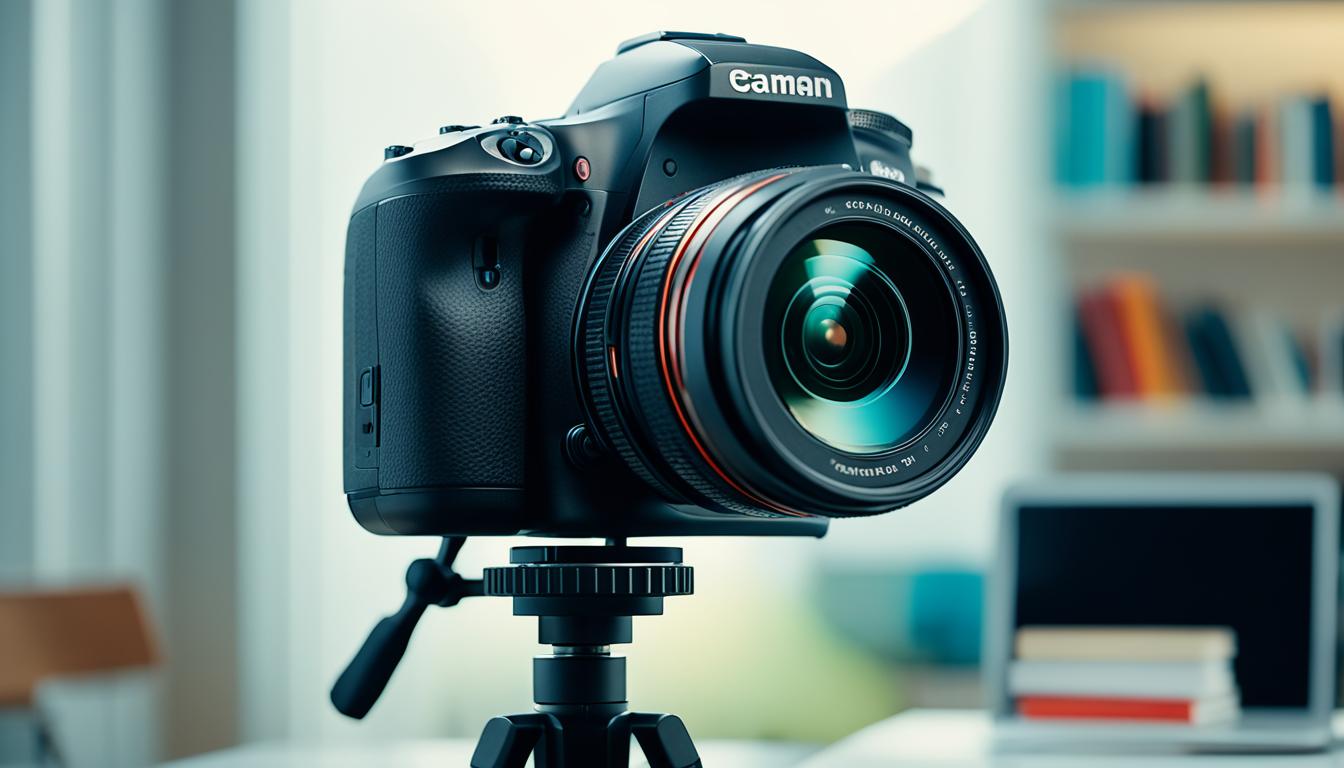
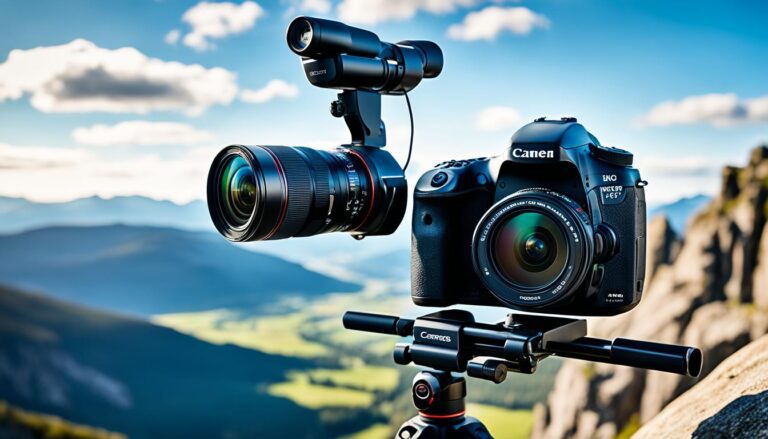
![Best Point And Shoot Camera With Long Zoom [2024]](https://mydreamcamera.com/wp-content/uploads/2023/11/best20point20and20shoot20camera20with20long20zoom2e61-768x768.jpg)
